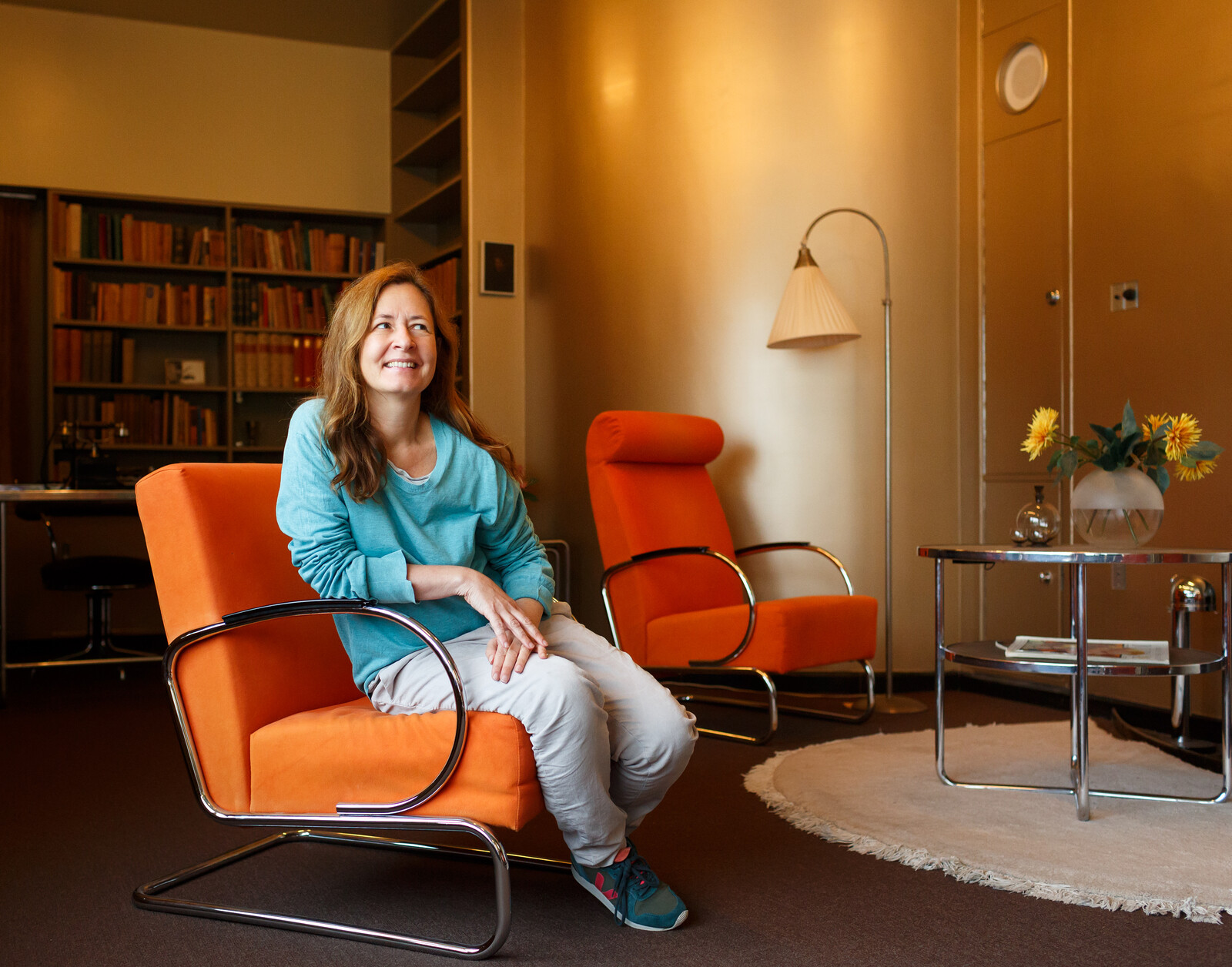Opera-House
November 13, 2016–March 5, 2017
Jongkindstraat 12
Rotterdam
The Netherlands
The French artist Dominique Gonzalez-Foerster has created a work especially for Sonneveld House that will be on show there from November 13, 2016 until March 5, 2017.
Opera-house is a domestic opera based on the Sonneveld family’s arrival in their new home. Using several soundtracks and objects, Gonzalez-Foerster transforms the static environment of the museum house into a theatrical space for active exploration.
Opera-house is based on early 20th-century operatic music and technology, but also on the experience of moving from a traditional to a modern environment. The family—Albertus Sonneveld, a director of the Van Nelle Factory in Rotterdam, his wife Gésine Sonneveld-Bos and their daughters Puck and Gé—had previously lived in a stately 19th-century townhouse. Although atmospheric, it was dark, with old-fashioned furnishings. When they moved, they left almost everything behind in the old house. Every element in the new house was chosen in consultation with the architects. The only items the family brought with them were books, clothing and some personal belongings, all carried in a single suitcase.
The studio on the ground floor was designed for the two daughters. The sisters used the studio for reading, studying and listening to music. It has a multifunctional sofa with an embedded sound system. The radio is connected to other rooms in the house, each of which has a speaker, enabling the family to listen to the music selected in the studio all over the house. Gonzalez-Forester uses the original loudspeakers to play soundtracks that can be heard throughout the villa, creating an in-house “opera.”
Gonzalez-Foerster created Opera-House especially for Sonneveld House, but the piece can be seen in the context of her recent work, such as M.2062, a prospective and fragmented opera, taking place as a series of performances all over the world. It also relates to her collaborative work with Ari Benjamin Meyers, such as T.451, a performative work inspired by Fahrenheit 451 (made into a film by Truffaut in 1966), taking place in several spaces and environments.
Living between Paris and Rio de Janeiro, Dominique Gonzalez-Foerster (1965) explores the relationship between fiction and reality, using film, performance, installation and photos. Taking inspiration from literature, the cinema and music, her work explores the borders between audience and stage, private and public, past and present. Her work has been exhibited at leading institutions and events including the Centre Pompidou, Tate Modern, Manifesta 10 and the Guggenheim Museum.
Sonneveld House
Sonneveld House is one of the best-preserved houses built in the Dutch Functionalist (Nieuwe Bouwen) style. The villa was designed in 1933 by architecture firm Brinkman and Van der Vlugt for Albertus Sonneveld, a director of the Van Nelle Factory, and is located next to Het Nieuwe Instituut on Museumpark in Rotterdam. The architects designed it as a total concept in which architecture, interior and furnishings are perfectly coordinated and reinforce one another.
Het Nieuwe Instituut regularly invites an artist, designer or architect to make a site-specific installation for Sonneveld House. The confrontation with contemporary art and design sets the carefully restored monument in a contemporary context. In 2016 Het Nieuwe Instituut has invited three internationally operating visual artists to make successive works for Sonneveld House. Previously in the series, the Mexican architect and artist Santiago Borja made an installation on the roof of the house, and Irish artist Eva Rothschild followed by creating a series of large, geometric sculptures, which were placed throughout the house. The series is curated by Erich Weiss.
Het Nieuwe Instituut
architecture, design, digital culture
The contemporary era is characterised by radical technological, economic, cultural and social shifts. Het Nieuwe Instituut in Rotterdam aims to illuminate and map a rapidly changing world while at the same time fostering discussion of topics related to the vast field of design. All the institute’s activities are grounded in the principles of design and innovation—two concepts bound up with changing value systems and conflict. Sonneveld House is owned by Stichting Volkskracht Historische Monumenten, Rotterdam, and managed by Het Nieuwe Instituut.
Opera-House by Dominique Gonzalez-Foerster has been made possible by a generous contribution from the Mondriaan Fund.

